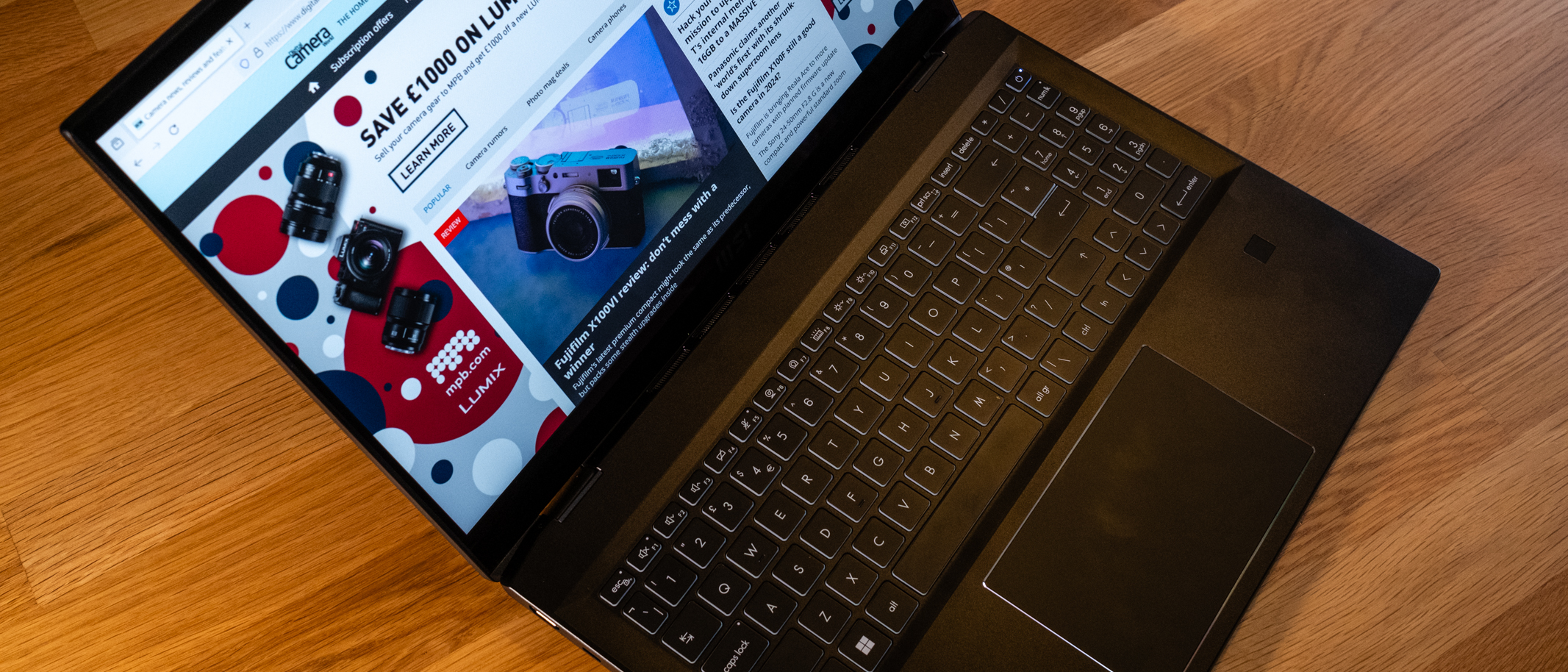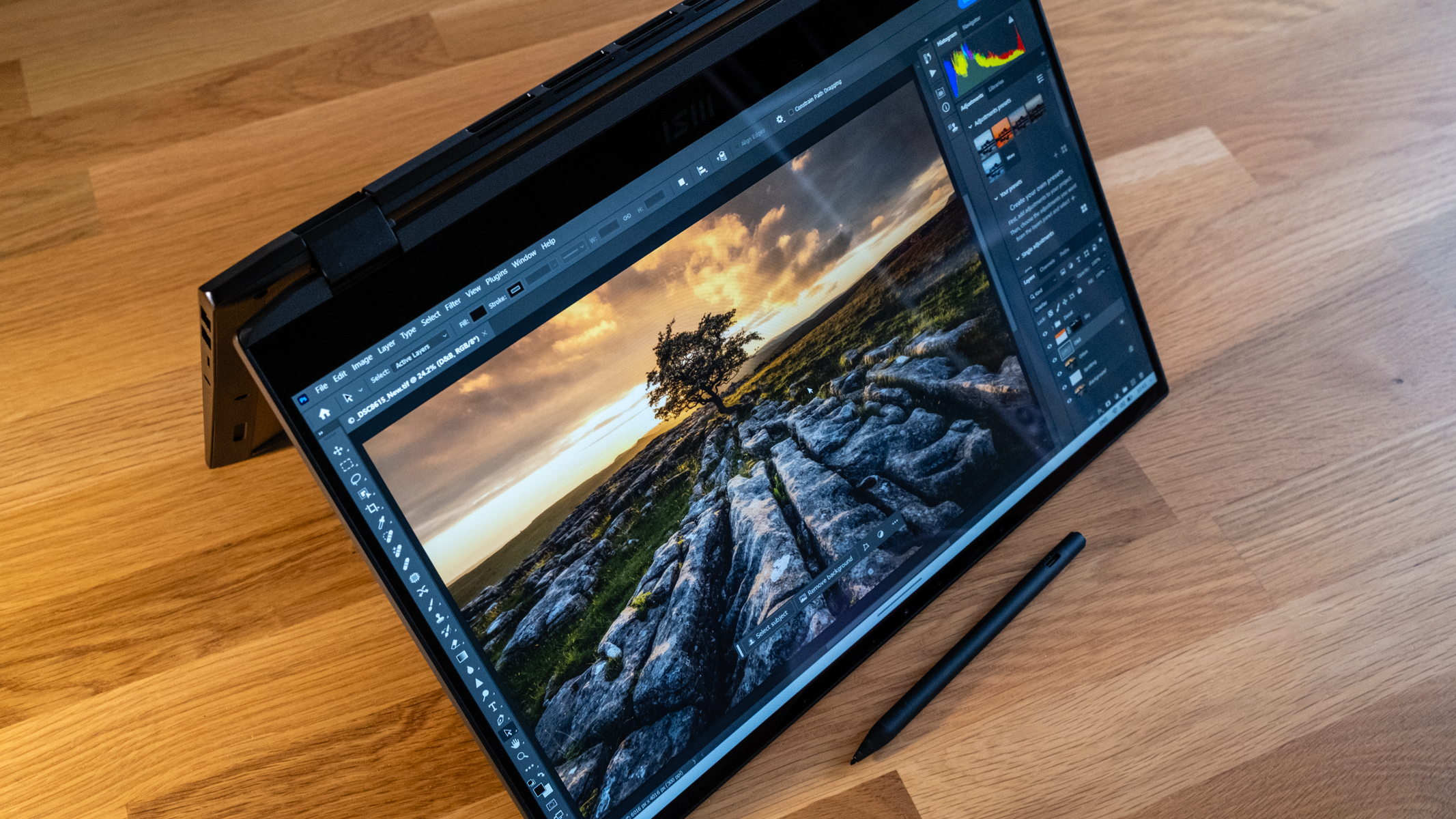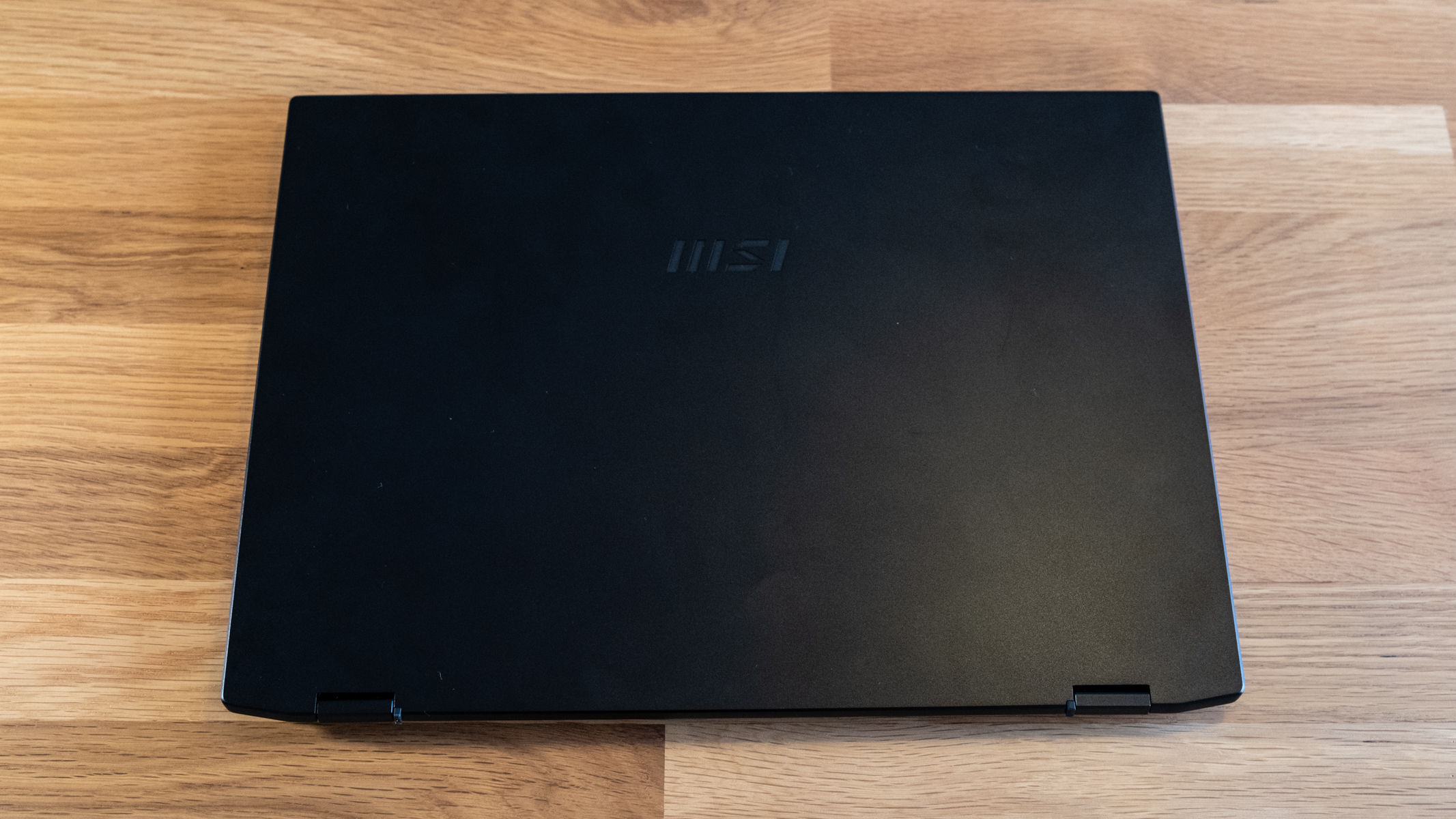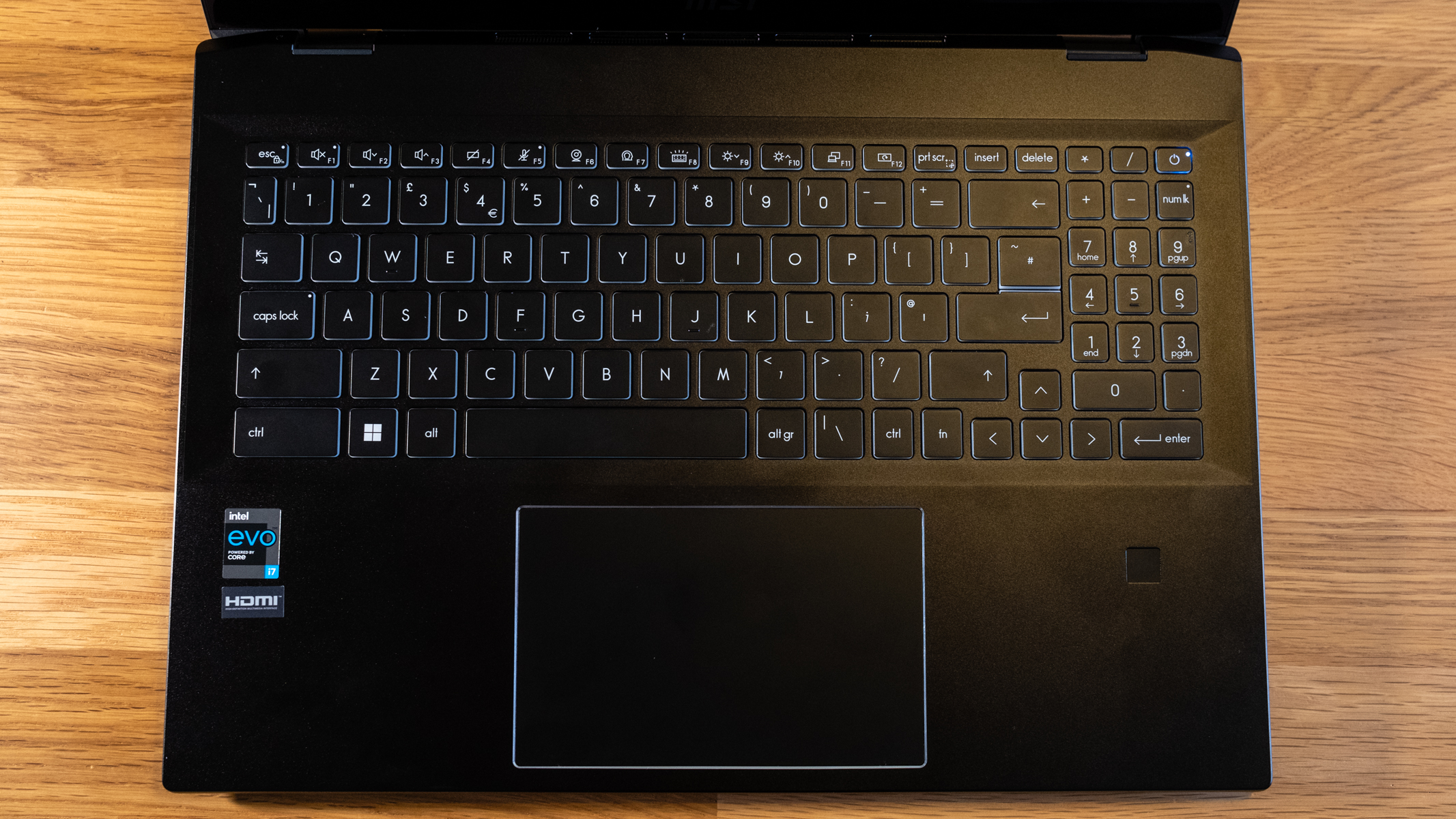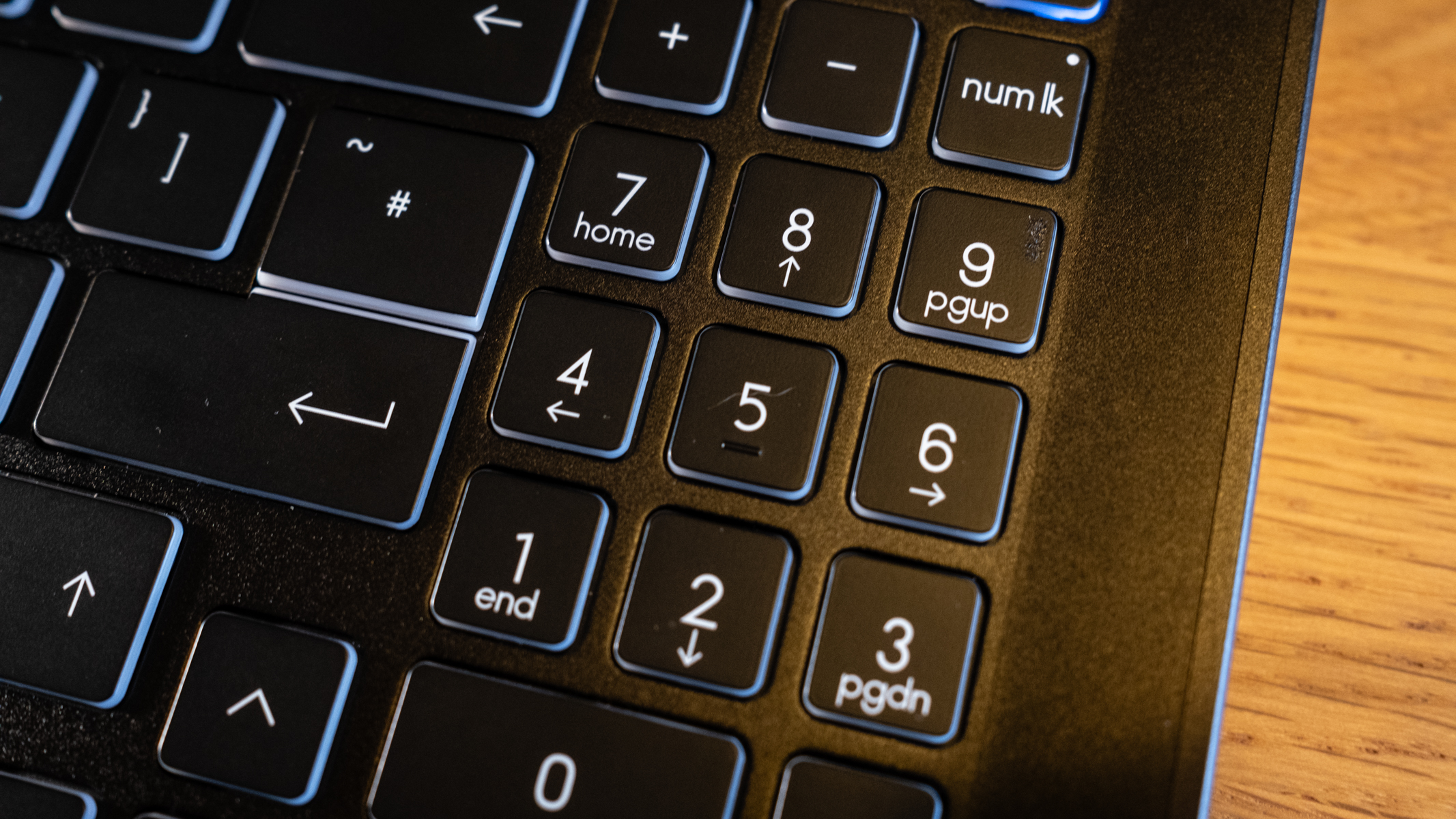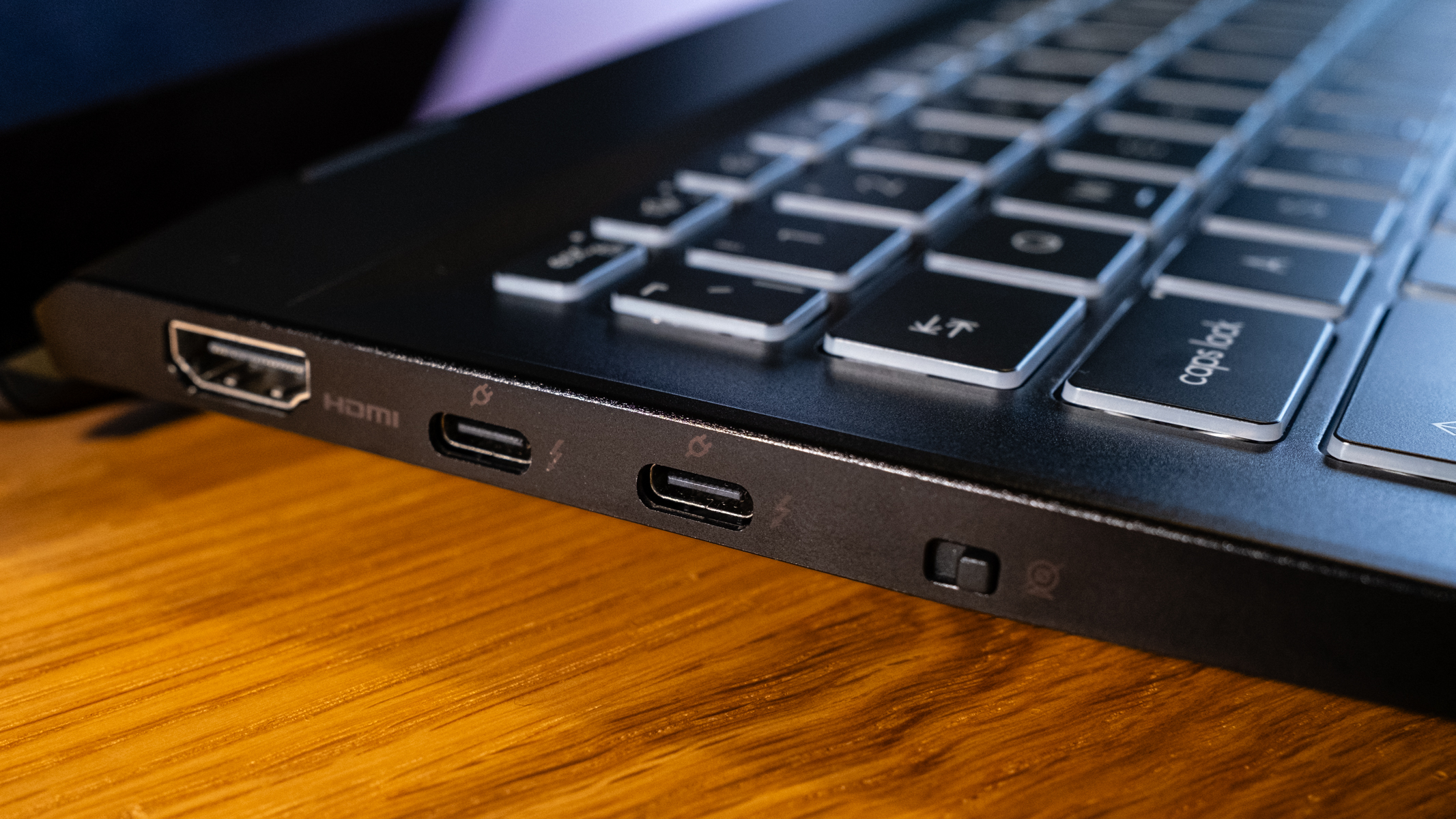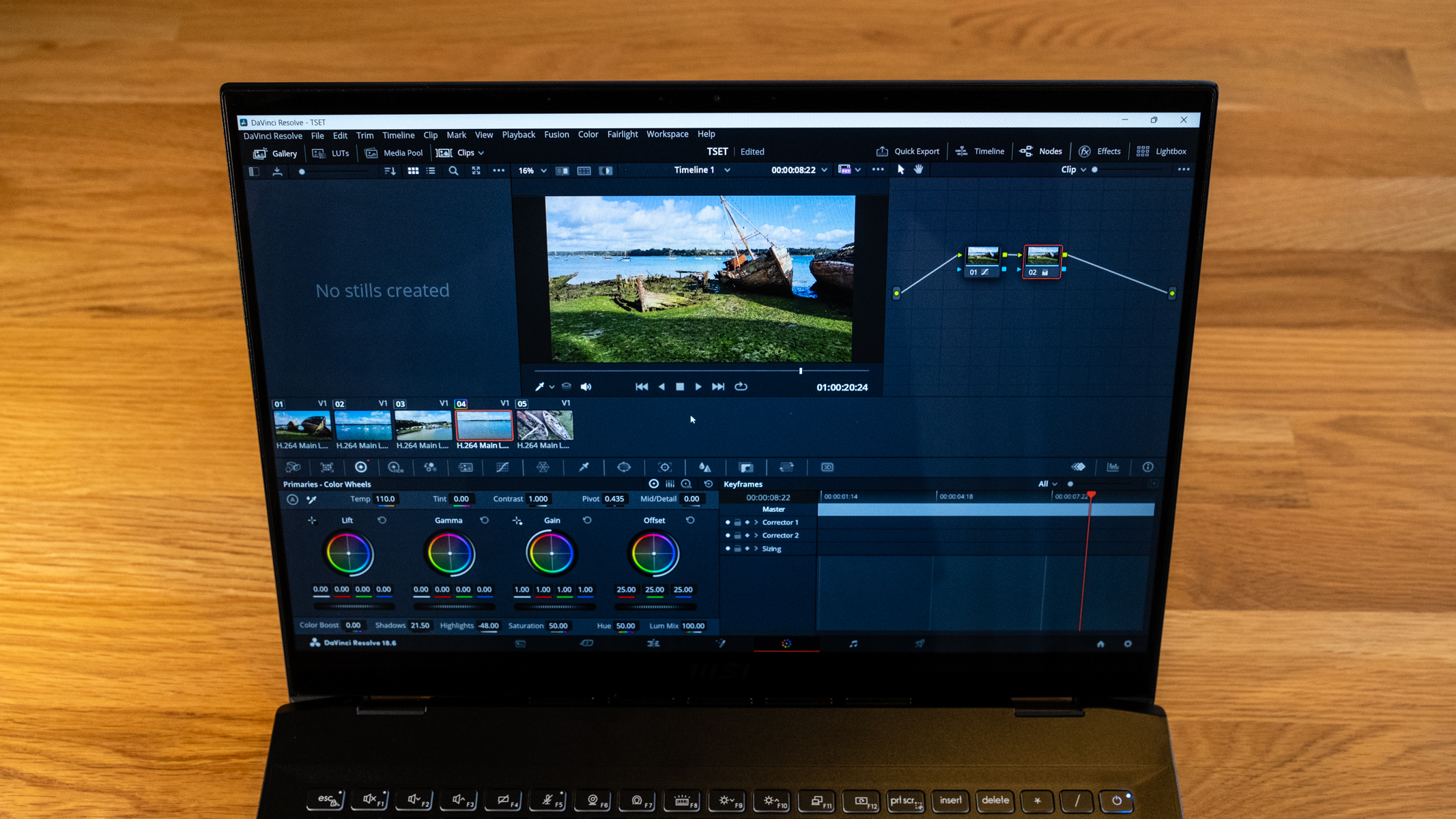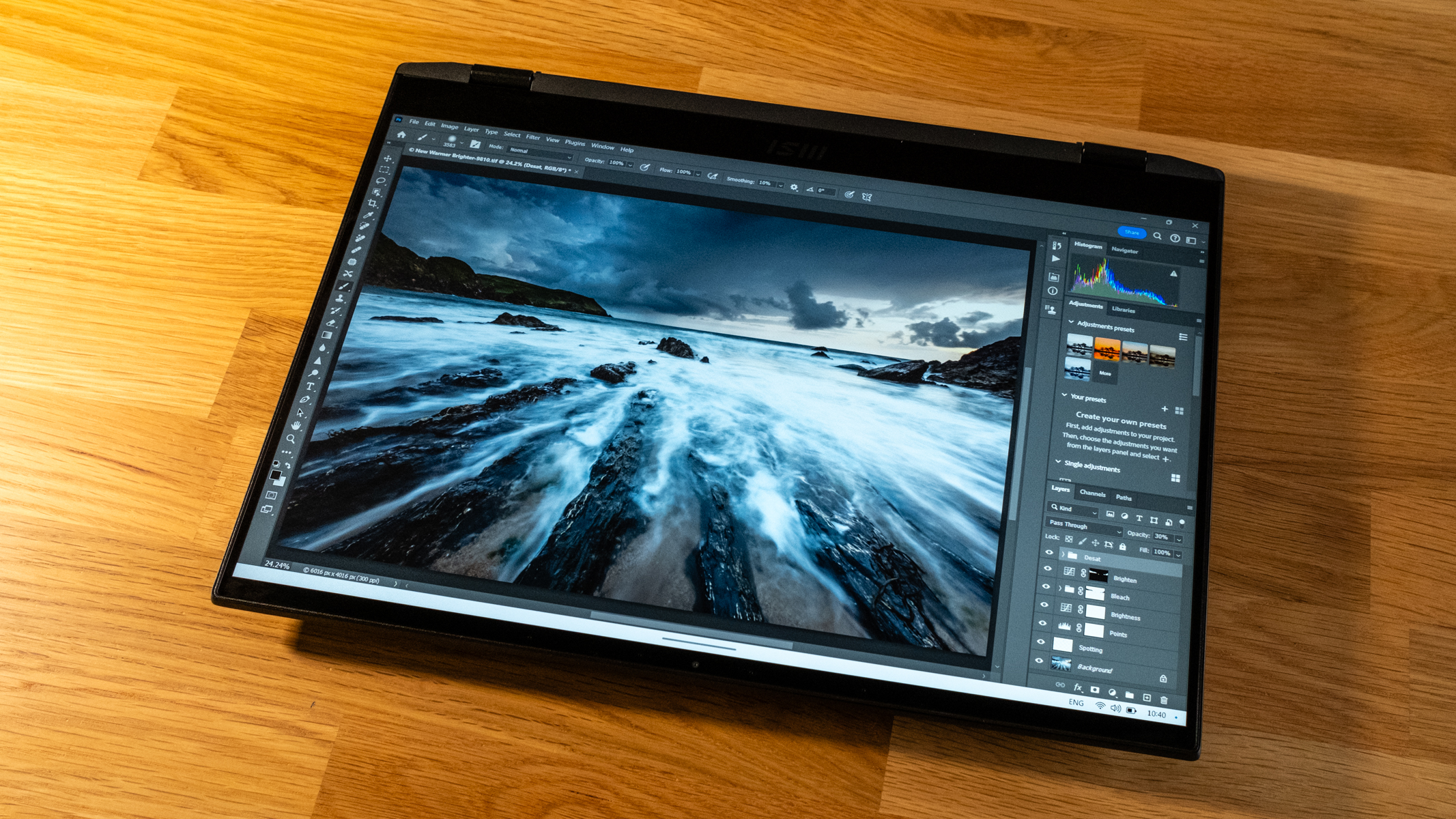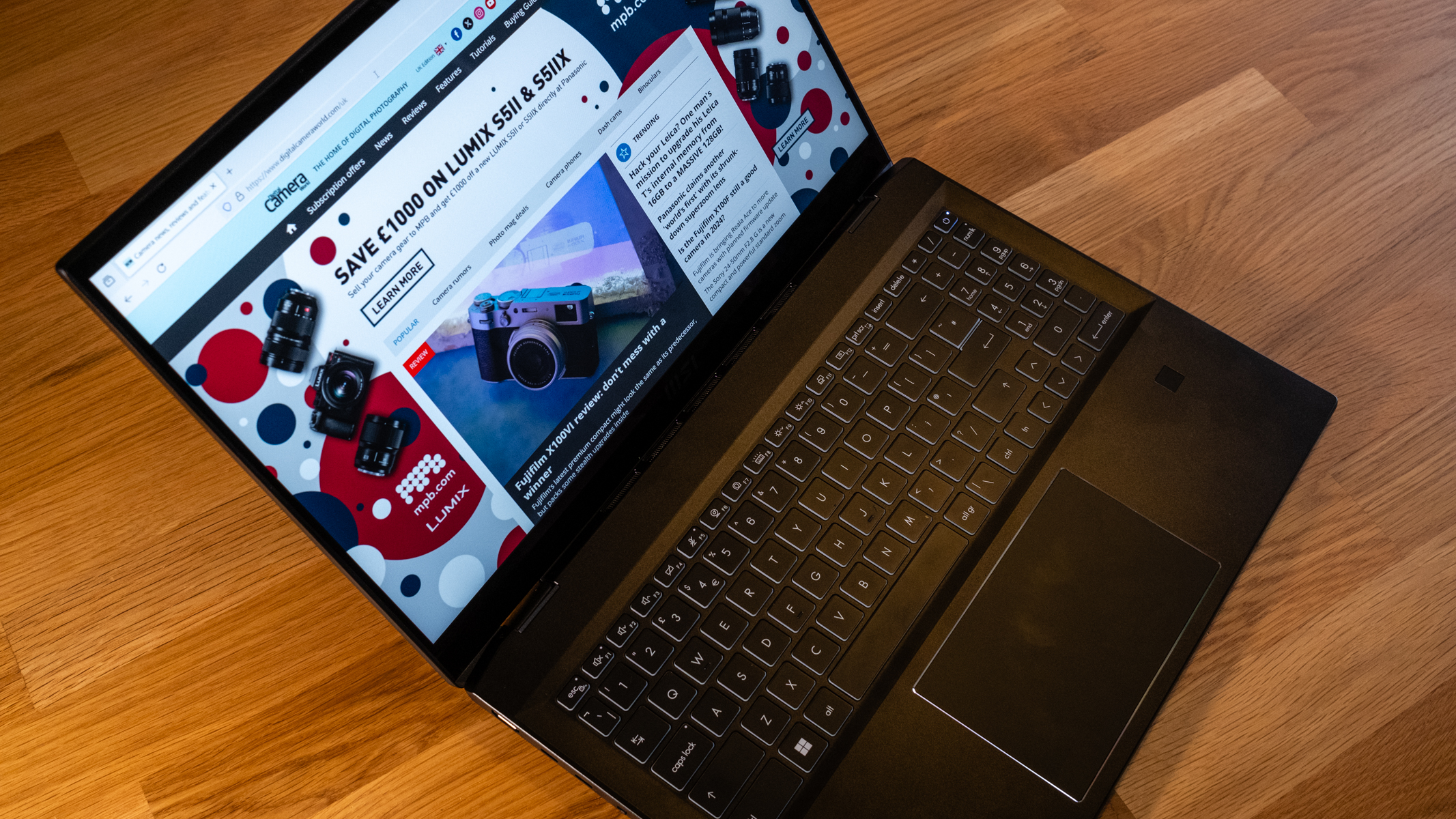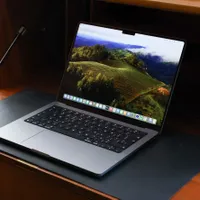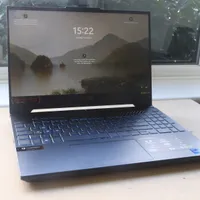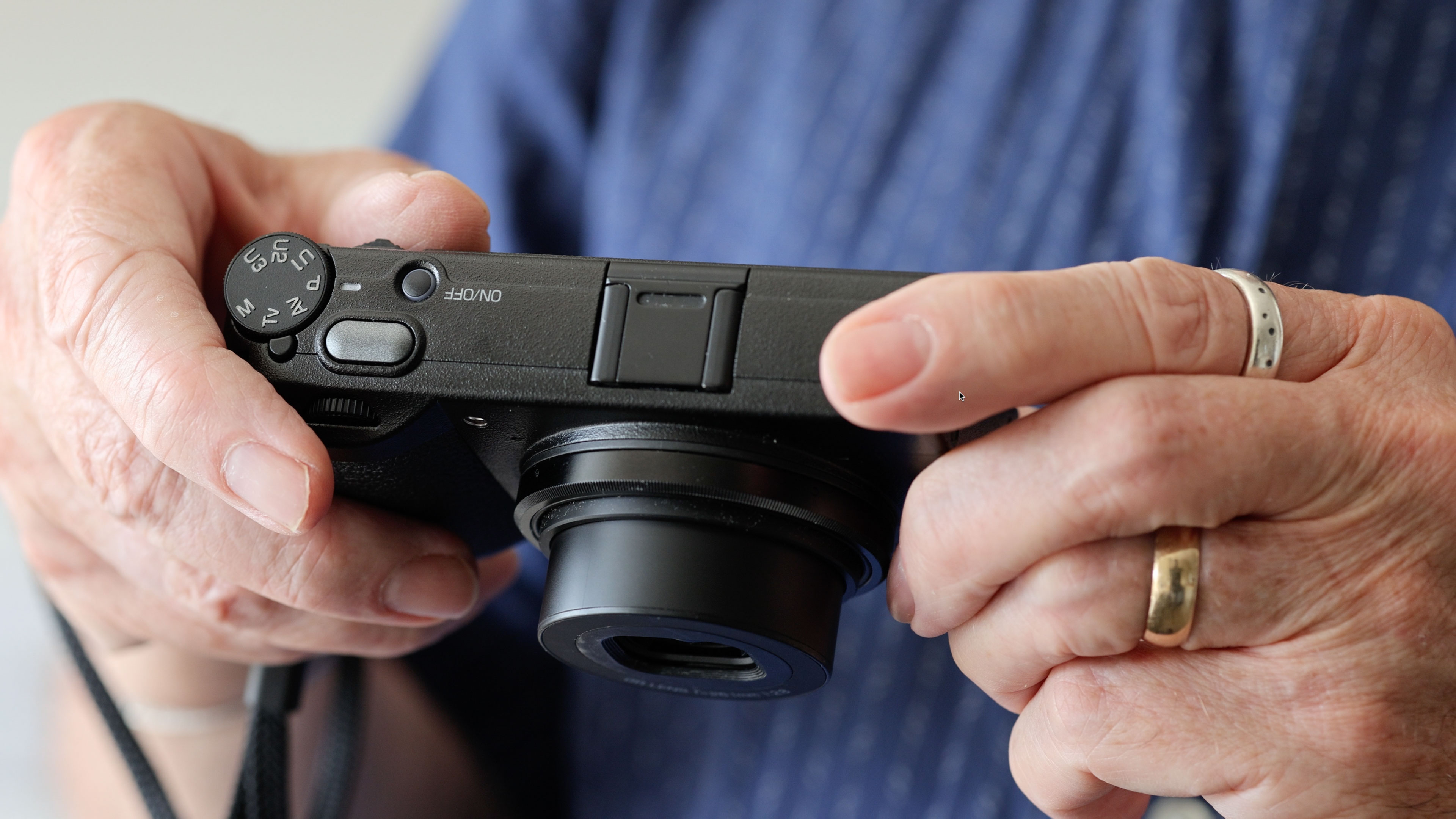Digital Camera World Verdict
The MSI Summit E16 Flip Evo is a great productivity and general-use laptop with the ability to handle enthusiast-level photo and video editing. It does struggle with more demanding image and video processing tasks but works well with Adobe Lightroom. The ability to use the device as a laptop or tablet is great, including using it like a pen display, but with the keyboard disabled in this mode, you have to rely on menus.
Pros
- +
Excellent build quality
- +
Fast software loading
- +
Comfortable in use
Cons
- -
Integrated graphics
- -
Only 16GB of RAM
- -
Unimpressive screen resolution
Why you can trust Digital Camera World
With the debate and arguments about which platform is best for creatives well and truly over, it’s safe to say that these days you can use both Apple and Windows computers effectively for creative work. There will always be people who prefer one platform over the other for different reasons, but with Windows laptops like MSI Summit E16 Flip Evo - A13MT, creative users can take advantage of features not available in their Apple counterparts.
The MSI Summit E16 Flip Evo is a 2-in-1 Windows 11 laptop that’s aimed at creatives thanks to offering a 16-inch touchscreen with compatibility with the MSI Pen; this effectively turns the laptop into an all-in-one pen display and computer, allowing you to make direct inputs into software such as Adobe Photoshop and Lightroom to increase precision and comfort. But, without the requirement for additional hardware.
This is a reasonably powerful laptop with a 13th Gen Intel Core i7, 16GB of RAM, a 512GB SSD, 1920x1200 IPS screen but like many 2-in-1 Windows laptops, it only offers Intel Iris Xe Graphics. This makes it a mid-range option that should be able to meet the needs of enthusiasts for photo and video editing, and to some degree low-end professional use, but for more demanding professionals more RAM and a discreet graphics card (GPU) would be essential.
The main draw of this laptop is the simple fact that it can be used as both a traditional laptop and a tablet, using either your fingers or the MSI Pen instead of the trackpad or a mouse. And at £1299 this mid-range 2-in-1 is reasonably priced for the enthusiast market. It’s undoubtedly a capable laptop that performs well, but it’s certainly no powerhouse when it comes to processing power.
MSI Summit E16 Flip Evo: Specifications
| Processor | 13th Gen Intel Core i7-1360P 12-core CPU |
| Graphics (GPU) | Intel Iris Xe Graphics |
| Display | 16-inch QHD 16:10 IPS touchscreen, 1920x1200, 165Hz refresh rate, 100% sRGB |
| Memory | LPDDR5 16GB |
| Storage | 512GB NVMe PCIe Gen4 SSD |
| Battery | 82Wh |
| Ports | 2x Thunderbolt 4/DP/USB-C (w/ PD Charging), 2 x USB-A 3.2 Gen2, Audio combo jack, HDMI 2.0, MicroSD Card Reader |
| Wireless | Intel Killer Wi-Fi 6E AX1675, Bluetooth 5.3 |
| Camera | IR FHD (30fps at 1080p) |
| Power | 65W USB-C Power Adapter |
| Size (HxWxD) | 358 x 258.55 x 16.85 mm (14.09 x 10.18 x 0.66 in) |
| Weight | 1.9 kg (4.19 lbs) |
MSI Summit E16 Flip Evo: Design & Handling
MSI is generally known as one of the higher-end gaming laptop and gaming PC component manufacturers, with design and build quality held in high regard. The Evo Flip Evo is reassuringly well-built and looks refined in matte black with a glossy MSI logo on the lid. It’s a great-looking laptop that sports a large trackpad and a fingerprint reader alongside Windows Hello face recognition, so nothing to complain about here. Although, the matte black body is a fingerprint magnet.
The Flip Evo is a weighty beast at 1.9 kg / 4.19 lbs, but this is an average weight for 16-inch laptops whether Windows or Apple models. It’s just something to bear in mind when purchasing a laptop that you intend to carry around often, and if this weight is problematic you may be better served with a laptop offering a smaller screen size and a consequently lighter weight.
Being a laptop aimed at creatives, the screen itself is just as important as the processing power provided by the internal components. And while the 16-inch 16:10 screen is fantastic in terms of screen real estate, it’s let down by the mediocre 1920x1200 resolution when many current laptops sport QHD or 4K screens. This resolution coupled with the large screen means that you can sometimes see pixelation in software interfaces and images when zoomed in.
The best camera deals, reviews, product advice, and unmissable photography news, direct to your inbox!
The full keyboard is nice and rigid and doesn’t flex during typing. There’s not a great deal of travel in the keys, but the typing experience is comfortable and the fact that there’s a number pad to the right of the Qwerty keyboard is useful. This is a reduced size compared to desktop keyboards with a number pad, but it remains comfortable to use. The keyboard also offers three levels of white backlighting which can be switched off when not needed to conserve battery power.
When it comes to ports, there are two Thunderbolt 4/DP/USB-C (w/ PD Charging), Two USB 3.2 Gen2 Type-A, an audio combo jack, HDMI 2.0, and a MicroSD Card Reader. The latter is always something of an oddity because, for most people, a full-fat SD card reader is preferable since this is the more common card type for cameras and microSD cards can be used with an SD adaptor.
The ability to PD charge speeds up the process, but this comes at the expense of one of the USB-C ports, so it’s swings and roundabouts here. Battery life is naturally better with less demanding office tasks, web browsing, and watching streaming services, providing enough charge for a day’s use, but this is dramatically reduced to just a few hours when using photo and video editing software that use more hardware resources which, in turn, require more power.
MSI Summit E16 Flip Evo: Performance
In terms of performance; web browsing, using office apps, and performing general tasks, the Flip Evo showed no signs of slowdowns or stuttering, which is to be expected for this type of undemanding use. Loading more demanding apps such as Photoshop, Lightroom and even Davinci Resolve is surprisingly fast. However, when working within these applications, heavier processing loads do take time to render because of the 16GB of RAM and the reduced hardware acceleration as a result of only having an integrated graphics chip.
Davinci Resolve was the slowest when switching between pages and making adjustments, but it’s not painfully slow and this is extremely demanding software. A basic 30-second 4K video took a minute to render, which is pretty good. Lightroom, on the other hand, was by far the best performer, and this is great for enthusiasts since many only use Lightroom for organizing, editing, and outputting their Raw files and JPEGs depending on the file format they capture.
The 512GB hard drive is on the low-capacity side, so it will fill up quickly and make using an external hard drive a necessity for photo and video storage. This would allow you to use the internal storage mainly for the operating system, applications, and office documents with much lower storage demands to avoid quickly filling up the internal SSD. A 1TB SSD would be better, but 512GB is a workable capacity.
For photo and video editing, a discreet graphics card is always preferable but naturally drives costs higher. For a 2-in-1 laptop with an Nvidia 4060 GPU, the cost of the 2-in-1 laptop roughly doubles with the sweetener being that you typically get more RAM and storage thrown in. But even with the integrated graphics offered by the Flip Evo, 32GB of RAM would make a huge difference to overall performance when it comes to photo and video editing.
In the specs, the screen is advertised as being capable of displaying 100% sRGB. When the screen was calibrated using a Datacolor Sypder X Pro, it was indeed displaying 100% of sRGB. Alongside this, it was displaying 82% of Adobe RGB and 87% of DCI-P3. This is fine for enthusiasts using the Flip Evo for photo editing because you can get by with a screen displaying 82% of Adobe RGB, although this isn’t quite a wide enough color gamut for more demanding users and the most color-critical work. The overall brightness and contrast are also a little lackluster – adequate, but far from outstanding.
The Flip Evo performs well in tablet mode with the screen flipped back at an angle to allow the device to stand up, or fully rotated flat. It’s comfortable to hold in one arm for a short time, but it is a heavy laptop so it doesn’t take long before you feel the need to lay it on your lap with the screen facing towards you. When in tablet mode, the keyboard is disabled so you can’t accidentally press the keys, but this means that you’re unable to use keyboard shortcuts in photo and video editing software, and is annoying if you use them.
You can get by using the menus and toolbar in Photoshop, for instance, and using the MSI Pen is both comfortable and precise alongside providing a tactile editing experience. But I couldn’t help feeling frustrated that I had to fully rely on menus. For changing tools and some settings I simply used the fingers on my left hand while using the pen on my right. The overall experience is akin to using a pen display, but the functionality and general workflow aren’t as efficient.
MSI Summit E16 Flip Evo: Verdict
The MSI Summit E16 Flip Evo is a great productivity and general-use laptop with the ability to handle enthusiast-level photo and video editing. It does struggle with heavy processing tasks in Photoshop, but with Lightroom, it handles Raw file processing much more effectively; many enthusiasts only use Lightroom to organize, edit, and output their Raw or JPEG files with little to no need for Photoshop, and the Flip Evo can comfortably handle this.
To be fair, it can manage what you might call ‘standard’ Photoshop editing and even basic video editing, but it only takes longer to perform the more demanding editing tasks professionals are likely to throw at it. To put things into context, if you’d like a 2-in-1 laptop that’s much more capable, you’d roughly need to double the reasonable cost of $1699 / £1299 of the Flip Evo and once in the $2500 price bracket, you could get a much more powerful ‘standard’ laptop so jumping up to the next 2-in-1 rung isn’t quite so clear cut.
In terms of design and build quality, the Flip Evo can’t be faulted and the matt black body looks sleek and refined. It’s a bit of a fingerprint magnet, but this is often the case with black laptops so nothing out of the ordinary. The large screen is great in terms of size and is as crisp and clear as you can get with a 1920x1200 resolution. It’s a shame it’s not 2560x1600 because this would deliver a significantly improved picture and a wider color gamut, increased contrast and brightness would be a huge bonus.
✅ Buy this if...
- You would like a mid-range 2-in-1
- You don’t require top-end processing power
- You need touchscreen and pen capabilities
🚫 Don't buy this if...
- You need a more reliable screen
- You prefer to use a more capable pen display for editing
- You’re a professional in need of more processing power
MSI Summit E16 Flip Evo Alternatives
Love them or loathe them, there’s no getting away from the fact that the Apple Macbook Pro series of laptops is a great option for creatives. The Apple MacBook Pro 14 (M3, 2023) version provides fantastic processing power, but you will need to upgrade the internal storage and RAM and the point of purchase to fully enjoy what the Apple MacBook Pro 14 (M3, 2023) is capable of.
‘A gaming laptop for photo editing!?’ We hear you cry. Well, as long as a gaming laptop has a decent wide gamut screen, all of the processing power aimed at gaming is the same as what you need for photo and video editing, so they’re perfect. The Asus Tuf Gaming F15 laptop offers a 15.6-inch screen with plenty of processing power and the ability to upgrade the RAM from 8 GB to 32 GB.
James Abbott is a landscape and portrait photographer based in Cambridge. He’s also an experienced photography journalist specializing in camera skills and Photoshop techniques. He is also a CAA-approved drone pilot and professional aerial photographer.
